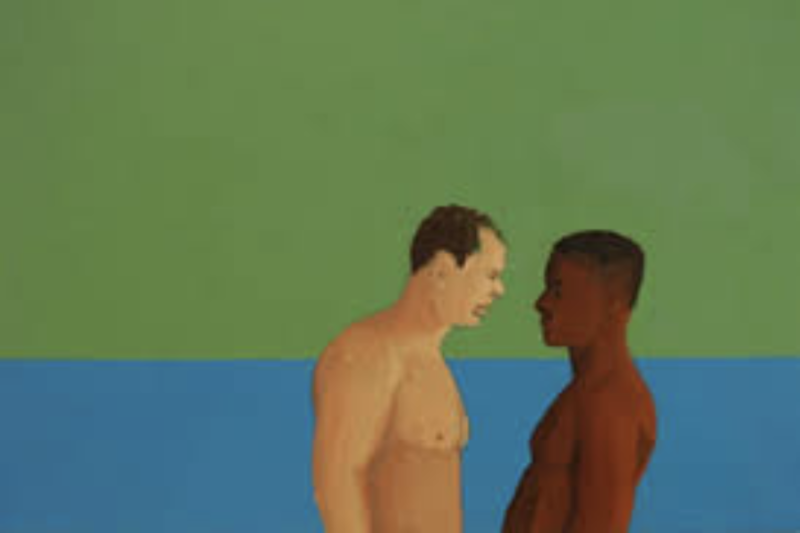Is this the Seneca you expected to see on the big screen, or not?
The trailer below has just been released for director Robert Schwentke’s long-awaited movie Seneca: On the Creation of Earthquakes (IMDB). I think John Malkovich is a good choice to play the Stoic philosopher. From what I understand, the movie is a black comedy, which will explore Seneca’s troubled relationship with Emperor Nero. It may come as a shock to some modern readers of Seneca, though, to discover that his life didn’t always seem to reflect his moral principles. See the excerpt from my biography of Seneca below, if you’re interested in finding out more!
Some quotes from the trailer…
They laugh at you! The Stoic preacher of the simple life who got filthy rich being Nero’s ghostwriter.
…a bargain not many good men have made when agreeing to help bad regimes but, you know, I did it for Rome!
Perhaps I can become my best Seneca by playing Socrates.
My Biography of Seneca
A few years ago, I was commissioned to write a short biography of Seneca for the Capstone Classics selection from his letters to Lucilius, which you can find on Goodreads, and in all good bookstores. In many people’s minds, an image of Seneca as a wise and virtuous historical predominates, a man who lived simply despite his station in life. I wanted to highlight some of the criticisms of Seneca that are explicitly stated, or clearly implied, in ancient sources, though. I felt they’d simply been ignored for far too long. That’s not to say I agree with them — we can never be certain — but I felt that most existing accounts of his life were misleading because they brushed many serious concerns about his life under the carpet.
Excerpt: The Life of Seneca
Lucius Annaeus Seneca, also known as Seneca the Younger, is one of the most compelling and yet paradoxical figures in Roman history. Ancient historians, particularly Tacitus, Suetonius, and Cassius Dio, provide us with important details about his life. These mainly regard Seneca’s relationship with Nero, with whose rule as emperor his own story is intertwined. However, our information from these sources is very sparse and its reliability has often been questioned. On the other hand, Seneca himself was a very prolific writer. Yet if we turn to his works for clues about his life and character, we encounter another notorious problem — he was carefully constructing his own public image.
What Seneca tells us about himself often says more about how he wished to appear than about how he actually was in reality.
Seneca’s writings employ rhetorical methods to knowingly paint a picture of his life that is, in many ways, quite at odds with the historical evidence. What Seneca tells us about himself often says more about how he wished to appear than about how he actually was in reality. For example, he was by profession a rhetoric tutor. He says very little in his writings about his passion for rhetoric, his position as an imperial speechwriter, or his relationship with Nero’s court, though, in order to present himself, first and foremost, as a Stoic philosopher. For instance, those who read only the Moral Letters, written to his friend Lucilius, are bound to form a very different impression of Seneca than those who consult other Roman sources about his life.
A good example would be the way Seneca describes his banishment. The island of Corsica was a thriving colony for wealthy Romans, long known for exporting wine. Seneca almost certainly lived in relative luxury there, probably accompanied by his wife, and attended by a large retinue of slaves. Perhaps slaves even carried him around Corsica in a sedan chair, his favoured mode of transportation mentioned in the later writings (e.g., Moral Letters, 55). Seneca chose, however, to portray himself as stranded on a “barren rock” where he eked out a very austere and lonely existence, surrounded by uncivilised foreigners. Emily Wilson notes that in doing so, he appears to be drawing inspiration from the earlier writings of the poet Ovid, who was in fact exiled to a remote town called Tomis, beside the Black Sea, at the edge of the empire on the so-called Scythian Frontier. Corsica, by contrast, is off the coast of Italy, just two days’ sailing from the port of Ostia, near Rome. Today, of course, it’s a popular holiday destination for tourists.
The enduring success with which Seneca constructed his own persona is perhaps best illustrated, however, by the curious way in which another man’s face was, for many decades, mistaken for his own. Seneca tells us that he suffered throughout life from some kind of chronic lung condition, possibly pulmonary tuberculosis. He says that he “became totally emaciated” through illness and often felt like taking his own life. He was only stopped by the thought that his loving father, who was now advanced in years, would be distraught at losing his son. However, as is often the case, Seneca’s writings contain rather conflicting accounts. He also says that it was his training in philosophy, rather than the thought of his father’s grief, that saved him from committing suicide.
My studies were my salvation. I ascribe it to philosophy that I recovered and got stronger. It is to her that I owe my life, and that is the least of what I owe her. (Moral Letters, 78.3)
This and similar remarks about his inner struggle, and his embrace of simplicity and austerity, shape the perception many readers form of Seneca the man. A bronze bust discovered at Herculaneum in 1794 was believed at first to depict Seneca, whose appearance was otherwise unknown at the time. The face was suitably haggard, slightly emaciated, with straggled hair, and beard, and an intense, perhaps even angst-ridden, expression. This image was widely replicated and found its way into works of art, book illustrations, etc. Today it frequently accompanies quotations from Seneca on the Internet. However, it is not Seneca.
This bust is now known as pseudo-Seneca and believed to be modelled on an earlier Greek sculpture, perhaps of the poet Hesiod. A couple of decades later, in 1813, a double-herm — a single sculpture composed of two busts — was discovered, dating from the 3rd century AD, which depicts Socrates and Seneca back to back. Seneca’s name is conveniently engraved upon his chest. Real Seneca looks completely different from the pseudo-Seneca. He is an overweight, bald-headed man, with a double chin, heavy jowls, pursed lips, and an emotionless, perhaps slightly aloof expression.
Of course, we can’t tell much about Seneca’s character from his facial appearance. What we do know, however, is that Seneca’s modern readers have tended to come away from his writings with an image of him more like pseudo-Seneca than real Seneca, because of how he describes himself in those writings. In real life, perhaps unsurprisingly, Seneca looked less like our stereotypes of an anguished poet-philosopher and more like a typical billionaire Roman senator. “It seems the face of a businessman or bourgeois,” as James Romm put it, “a man of means who ate at a well-laden table.” Seneca’s writings had once again created an image that proved to be dramatically at odds with the truth. With this note of caution in mind, therefore, we may proceed to examine the main events of Seneca’s highly eventful life.
For more of this short biography, check out the Capstone Classics selection from his Letters From a Stoic.
—
This post was previously published on MEDIUM.COM.
***
You may also like these posts on The Good Men Project:
 Escape the Act Like a Man Box Escape the Act Like a Man Box |
 What We Talk About When We Talk About Men What We Talk About When We Talk About Men |
 Why I Don’t Want to Talk About Race Why I Don’t Want to Talk About Race |
 The First Myth of the Patriarchy: The Acorn on the Pillow The First Myth of the Patriarchy: The Acorn on the Pillow |
Join The Good Men Project as a Premium Member today.
All Premium Members get to view The Good Men Project with NO ADS.
A $50 annual membership gives you an all access pass. You can be a part of every call, group, class and community.
A $25 annual membership gives you access to one class, one Social Interest group and our online communities.
A $12 annual membership gives you access to our Friday calls with the publisher, our online community.
Register New Account
Need more info? A complete list of benefits is here.
—
Photo credit: iStock.com
